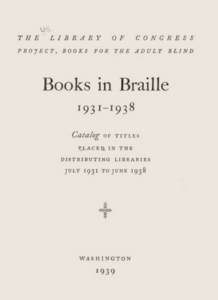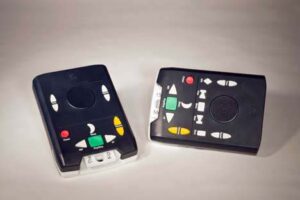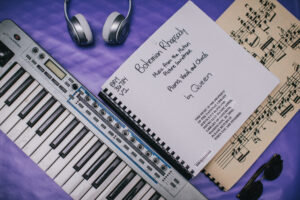About Library for the Blind and Print Disabled – “That All May Read.”
The Library of Congress National Library Service for the Blind and Print Disabled (NLS) administers a free national library program that provides recorded and braille materials to people who cannot use standard print materials. Beginning with 19 libraries in 1931, the network has expanded to 55 regional libraries, 26 subregional libraries, and 16 advisory and outreach centers serving all 50 states, the District of Columbia, Puerto Rico, the US Virgin Islands, and Guam.
The New Mexico Library for the Blind and Print Disabled was established in 1967 and is administered by the New Mexico State Library, a division of the Department of Cultural Affairs. The library offers online service through the Braille and Audio Reading Download (BARD) website and mobile apps, and free cartridge delivery that is customizable to each patron’s preference! The collection of digital audio books focuses mainly on recreational reading in a variety of genres and contains over 100,000 titles. Digital audio magazines such as The New Yorker are also available. Through our partnership with the Utah State Library for the Blind, braille books are provided through the United States Postal Service. Nearly 3000 New Mexicans who are blind or visually impaired or have a physical or reading disability are registered with the LBPD program.
Timeline
1931
Books for the Blind begins
Lobbied by J. Robert Atkinson, the founder of the Braille Institute of America, the Pratt-Smoot Act was passed by Congress and signed into law by President Hoover on March 3rd, 1931 so that the Library of Congress could administer the Books for the Adult Blind program.
By July 1st, nineteen libraries start providing service.
1935
Standard English Braille is adopted.
1947
First talking book machines are purchased.
1952
Children receive services.
 The Act is amended, deleting “adult” to include children.
The Act is amended, deleting “adult” to include children.
1959
Books on open reel tapes are circulated.
1962
Music materials become available.
1963
Talking Books are distributed on 10″ discs.

1966
Individuals with other physical disabilities receive service.
Congress passes Public Law 89-522 authorizing the Library to provide talking-book services to all persons who could not read standard print because of a visual or physical disability.
1967
New Mexico Program Established
1978
Program becomes NLS.

The Division for the Blind and Physically Handicapped becomes the National Library Service for the Blind and Physically Handicapped.
1981
Cassette Machine is distributed.

1996
First digital book is produced.
2007
Digital Talking Book Machine replaces cassette machine.

2013
BARD APP
The NLS launches the Braille and Audio Reading Download Application. This allows for patrons to stream audiobooks from their personal IOS or Android devices.

2016
Public Law 114-219 passes.
President Obama signs Public Law 114-219 authorizing NLS to provide playback equipment in all formats.
Unified English Braille is embraced.
2017
BARD Express is launched
2019
US enters Marrakesh Treaty.
US becomes the 50th member of The Marrakesh Treaty enabling the NLS to obtain foreign produced books for the program.
2019
NLS changes its name.
The National Library Service for the Blind and Physically Handicapped becomes the National Library Service for the Blind and Print Disabled, allowing the program to become more inclusive to individuals with reading disabilities.
New Mexico follows suit and becomes the New Mexico State Library for the Blind and Print Disabled.
2020
Customized cartridges!

New Mexico launches custom multiple book cartridges, allowing patrons to order dozens of books at once, even entire series, on one cartridge.
2024
Amazon Echo
The National Library Service partners with Amazon so that patrons can stream their Talking Book collection from the Echo device. 
2025
DA2 Player
The National Library Service implements a new Talking Book player that allows for both the use of a cartridge and the ability to download audiobooks wirelessly from their BARD accounts.

 Congress authorizes the program to begin collecting and maintaining a library of musical scores and instructional texts.
Congress authorizes the program to begin collecting and maintaining a library of musical scores and instructional texts.